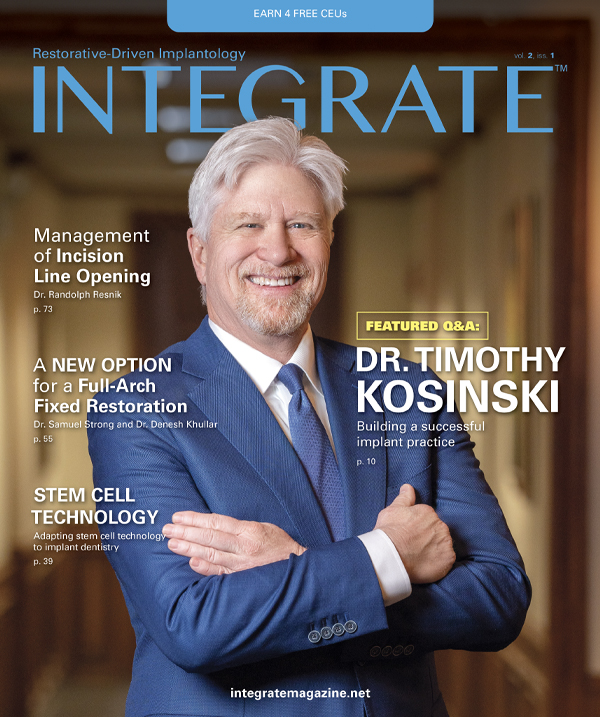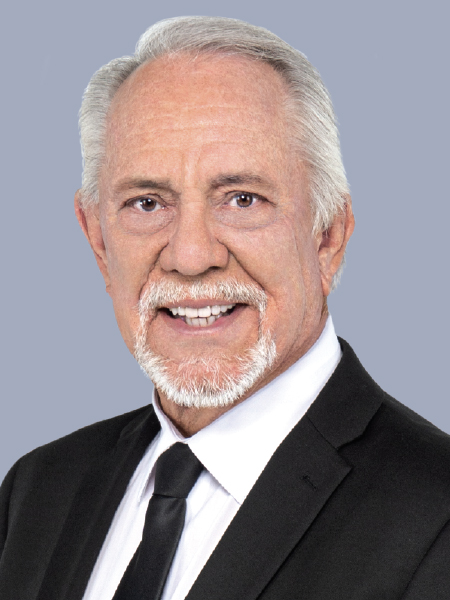Why Do You Pay So Much for Implants?

Across the globe there are several hundred companies manufacturing dental implants today, including my company in Irvine, California. The two largest selling brands control about 50% of the market — and they’re going to charge you roughly $500 per implant for the privilege of working with them.
Now that implant placement and restoration have become routine tasks for the general practice, I think it is time for dentists to reevaluate why they’re using their brand of choice and why they’re paying what they’re paying. Can you confidently say that you understand what goes into making your implants? Can you say you’re making an informed choice for your patients and practice?
A BRIEF HISTORY
The origins of today’s implants stretch back to 1952, when Swedish physician Dr. Per-Ingvar Brånemark demonstrated the phenomenon of osseointegration with his rabbit experiment. Dr. Brånemark placed a titanium chamber into the leg bones of a rabbit to study how blood flow affects bone healing. Only when he went to remove the titanium months later, he discovered that the bone had fused so completely with the chamber that it couldn’t be removed.
It would take nearly three decades for this research to make an impact. Throughout the 60s and 70s, blade-type endosseous implants and various subperiosteal and transosteal implants were seeing limited use in dentistry — but there was cautious skepticism toward the field of implantology by most practitioners due to questions about success rates and the difficulty of the surgical procedure. The implants delivered at that time were made of stainless steel, cobalt-chromium or aluminum.
It wasn’t until Dr. Brånemark resurfaced to present further research in 1978 that implants began to gain wider acceptance among dentists. Dr. Brånemark had been delivering screw-shaped, root-form implants made from titanium through the 60s and 70s — and his data showed that ordered living bone grows in intimate contact with the titanium without an intervening layer of soft tissue, ultimately creating a secure, lasting platform for the restoration.
From the 80s onward, implant manufacturing companies poured millions of dollars into the field, conducting lengthy and costly research that resulted in the advanced manufacturing behind the systems and brands we have today. And understandably so, these companies charge high prices to recoup those costs — but, they also charge high prices to maintain the sales and marketing teams that solidify their market dominance.
It’s been over four decades — I believe the field of implants has matured to a point that high prices need to be a thing of the past.
THE REALITIES OF MANUFACTURING TODAY
The barriers to entry for manufacturing implants have been eliminated — largely because of advancements made in computer-controlled systems.
In our facilities in Irvine, California, we design and manufacture over 800 unique implant parts today. Our machine shop is managed by world-class engineers who’ve spent their careers mastering implant design and manufacturing — individuals who have years of direct experience at the world’s best known implant companies. When my company originally tried to get into implant manufacturing three decades ago, we fell short because the processes weren’t as predictable at that time — and we scrapped the initiative.
Since restarting our implant team in earnest about 17 years ago, our engineers have led us in manufacturing implants accurately, efficiently and profitably. But much has changed recently; the knowledge has become widespread. There are even expert consultants who sell jump-start packages to any interested investor.
What I want dentists to understand is that manufacturing implants today is accessible, and the need for the “special know-how” has been greatly reduced.
To put a finer point on it: Just about every leading implant manufacturer uses the same brands of CNC machines — choosing between the Swiss-made Tornos Deco, which costs about $300,000, or the cheaper Citizen Cincom machine. Both brands of CNC lathes boast very tight tolerances, with accuracy measured in microns — as in one thousandth of a millimeter — which is about two orders of magnitude more than what you need for creating an implant connection.
Then, many of those leading companies use essentially the same Ti64 titanium alloy. This is the material that’s used in military, aerospace, high-end racing applications — even in the latest iPhone®. It is true that some manufacturers, my company included, apply post-processing to the implant surface — and there’s data to confirm that these enhancements speed up osseointegration.1,2,3 But, even if you do nothing to the titanium surface, the implant will still osseointegrate. Just ask Dr. Brånemark’s rabbit, who proved that 70 years ago.
And finally, to legally manufacture and sell implants in the United States, a company needs to gain clearance from the FDA. To do this, most companies submit a 510(k), which is a premarket process where the FDA evaluates whether your design is substantially equivalent to an existing product that’s already gained FDA clearance. What this means is that many manufacturers have extremely similar designs. Most new companies will release an implant with a tapered macrostructure and a moderately rough microstructure design, because that’s what the last 50 years of clinical research has shown to work — there’s no need for them to reinvent the wheel, and the FDA would make any deviations entrepreneurially difficult.
Put simply: Implant companies today use the same manufacturing systems, the same titanium and very similar designs. I would love to tell you that my implants made on my machines are superior — but you’d be hard-pressed to find an implant company that does it much differently.
WHY YOU’RE PAYING WHAT YOU’RE PAYING
The reality is that a handful of large implant companies, including Nobel Biocare and Straumann, control today’s market. These companies have exceptional legacies, and they’ve created innovations that have forever changed dentistry. They’ve gone to great lengths to educate dentists about the undeniable benefits of implants. But, that education also serves as a way to lock you into those company’s high-cost platforms.
What you’re paying for with those systems is not the “special sauce” of their products; you’re paying for the weight of their history — you’re paying to maintain these large companies that are supported primarily by the profits of titanium implants. It isn’t sustainable.
At Glidewell, we’re extremely conscious of the cost of our dental appliances. Our primary strategy is to ensure patients across the economic spectrum can afford our products — more people receiving care means more business for us. And because we’re a private company without pressure from investors, we can reinvest profits back into the company to ensure that costs stay low.
When I look at our production facilities and see how affordably we can manufacture implants, I know that those giant companies can do it even cheaper because of scale. Implant companies spend a lot of money trying to convince you that the implant is what the restoration is all about — that their implant is the differentiator for the restoration. But we all know that patients care most about their smile and not the implants supporting it.
Please don’t mistake me here: Implants are a critically important part of treatment, but it is our job as dental professionals to ensure patients can make informed choices — and I believe it would be difficult to prove that the most expensive implants are substantially better for the patient than a lower-cost implant.
HIGH PRICES NEED TO BE A THING OF THE PAST
I truly believe that all of us in dentistry feel an obligation to do our best for the patient. So many patients today are facing strained financial realities — and I would ask if we’re really doing everything we can to do what’s best for them.
It is an unfortunate aspect of dentistry that treatment is dictated in part by insurance reimbursements, with patients often choosing an inferior solution because that’s what their insurance covers. Typically, insurance companies will cover the cost of a three-unit bridge, but they won’t cover a single-unit implant. For most patients, implants are the better solution — they simply can’t afford it.
My revolutionary idea is to charge just $99 per implant. Plus, if you use our implants, you get an extra 20% off your implant restoration from our lab. Why? Because I want every patient in need of implant therapy to have access to it. I want to empower the dentist and patient to make the best choice for treatment.
There’s no catch. For just $99, you can buy a Glidewell HT™ Implant. This is a proven product with over a 99.2% success rate.4 We’re using the same manufacturing systems and materials as those big companies, but we’re charging you hundreds of dollars less.
At Glidewell we want to offer you as much as possible, because our business benefits directly when you do better. We’ve partnered with the renowned Resnik Implant Institute to ensure that dentists have easier access to top-tier implant education. We also host the only AAID MaxiCourse® available in California right here on our campus. For dentists not ready to commit to the larger curriculum, we also offer an array of free online and low-cost implant courses taught by experienced clinicians with decades of expertise. Plus, we’ve made available all the CAD/CAM restorations, surgical guides, associated tools, implant components and biologics needed for virtually any case — and of course they’re priced for your success.
JOIN THE REVOLUTION
It’s time for implants to be truly accessible to all those in need. My hope is that if my company slashes the price of implants, others will follow. Soon enough, the industry-wide price will be low enough for dental insurance companies to include implant treatment as a standard, reimbursable solution — and then patients everywhere can benefit from implant therapy.
It’s all up to you. In front of us is a rare opportunity to impact patients beyond our own businesses — to make things better for all in need.
References
-
Boyan BD, Lossdorfer S, Wang L , et al. Osteoblasts generate an osteogenic microenvironment when grown on surfaces with rough microtopographies. Eur Cell Mater. 2003;6:22–7.
-
Matsuo M, Nakamura T, Kishi Y, Takahashi K. Microvascular changes after placement of titanium implants: Scanning electron microscopy observations of machined and titanium plasma-sprayed implants in dogs. J Periodontol. 1999;70:1330–8.
-
Novaes AB Jr, Souza SL, de Oliveira PT, Souza AM. Histomorphometric analysis of the bone-implant contact obtained with 4 different implant surface treatments placed side by side in the dog mandible. The Int J Oral Maxillofac Implants. 2002;17:377–83.
-
Kerr M, Allen B, Park N. Clinical and radiographic evaluation of tapered implants with an aggressive reverse buttress thread and crestal microthreads: a retrospective study. For the full report, visit glidewell.com/ht-2-year.








